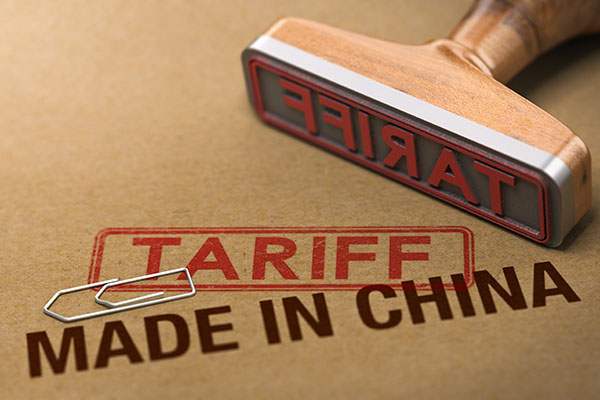Biden floats possibility of dropping China tariffs
For more than a while now, there have been various themes present in freight transportation and logistics. Those themes include: inflation at 40-year highs; the ongoing labor shortage, with more open positions than available workers; declining volumes and pricing; gains in the services-based economy, which tend to also act as a drain on freight demand, in some cases; railroad service issues, and, not to be forgotten, clogged ports, which impact operational throughput.
One issue, which prior to the pandemic was high on many stakeholders’ list, is tariffs, something that has since been ostensibly left to the wayside. But, now, there is a chance that could be changing, based on some comments recently made by President Biden.
While his comments were brief, they were telling all the same, simply saying that the White House is discussing dropping tariffs levied against China by his predecessor Donald Trump.
“We’re discussing that right now,” Biden said at a May 10 press briefing focusing on inflation. We’re looking at what would have the most positive impact.”
He did not specify if that means tariffs would be lowered or simply erased, noting no decision has been made on it.
When the Trump administration first rolled out its plan in mid-2018, it was comprised of a 25% tariff on $50 billion worth of goods imported from China, under the guise of an “America First” policy geared towards a more fair and beneficial position for U.S. companies, as well as focusing on: protecting domestic property and intellectual property; stopping noneconomic transfers of industrially significant technology and intellectual property to China; and enhancing access to the Chinese market.
At that time, Ben Hackett, founder of maritime shipping consultancy Hackett Associates, made the case that implementing tariffs would result in retaliation from major U.S. trading partners, calling it a “shoot yourself in the foot” strategy.
“How is that good for America? If the steep tariffs are put into place expect higher producer costs and lower exports,” said Hackett. “Again, neither good for the American economy nor the consumer. Nothing is certain anymore in Washington, D.C.”
As it turned out, Hackett’s assessment was not incorrect, considering that tariffs were widely viewed by U.S. shippers as an additional tax on them, in the name of doing business. But, to date, they have not done what was advertised: to lower the trade deficit.
That was echoed last week by Port of Los Angeles Executive Director Gene Seroka on a media conference call.
“The trade policy that began back in 2018 with the last administration, putting tariffs on China origin goods coming to the United States, has, in effect, amounted to a tax on American companies who import goods,” he said. “I don’t think even the authors would imagine the outcome we have witnessed: a huge rise in imports, a steep decline in exports, and the widest trade gap we have seen in American history. The retaliatory tariffs [by China] have irreparably harmed the American farmer and manufacturer. And, to compound matters, the Phase One trade deal that was touted by so many to have $200 billion in incremental agricultural goods purchased by China yielded zero additional purchases. It was a failure. We now have to move forward. We tried, and we have to find a better way to help the American farmer, exporter, manufacturer, and others back into the international game.”
By early 2020, it became increasingly clear that tariffs had not resulted in an improving trade outlook, confirming Seroka’s assessment, in that industry stakeholders indicated tariffs had strained global supply chain operations to a large degree, while creating confusion and tension for shippers needing visibility and consistency within their supply chains.
That situation has been played out at various times in recent years, with importers “pulling forward” China-manufactured goods into the U.S. in order to get ahead of scheduled tariff increases and has been viewed as a key driver of tariff-related uncertainty. Another byproduct of the tariff tension, or U.S.-China “trade war” has been seen in sourcing upticks from other Asian manufacturing hubs such as Vietnam, Malaysia Singapore, and Thailand, among others.
The trade war has also had a negative impact on the manufacturing sectors, too, a key cog of freight activity, which has been evidenced in declines, at times, of new orders, which essentially serves as a benchmark for demand.
What happens now with tariffs remains to be seen, but it is clear what is going on now is not working. It will be interesting to see where things go from here, at a time when there are more mixed economic signals than perhaps ever.













